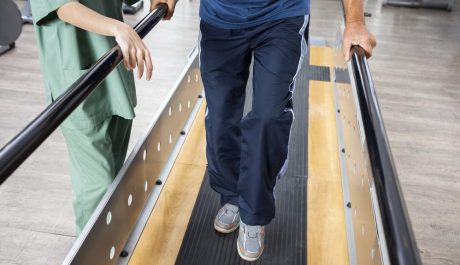It has long been known that early rehabilitation provides the best start to a client’s long road to recovery following a devastating, life-changing injury. The Rehabilitation Code, introduced in 1999, could be said to be the start of that realisation or at least put in black and white a framework for professionals involved in the compensation side of a personal injury claim, namely, insurers, claimant solicitors and defendant solicitors.
In the years since, all sides of the personal injury sector appear to have embraced this concept. But is this the same in clinical negligence?
In this article, first published in the January 2024 edition of PI Focus, Anna Wiseman and Nadia Krueger-Young look at the barriers to accessing rehabilitation in complex catastrophic personal injury (PI) cases and how this differs in clinical negligence cases.
Personal injury
From a PI perspective, early rehabilitation is a no-brainer, or at least should be. The sooner after an accident an injured party can get the therapy and treatment they need, the more effective that treatment can be. And the quicker they can return to doing the things they did before, such as working, going to the gym and returning to the joys of family life. For a claimant, this means they get their all-important recovery. For the ‘compensators’, a claimant who is back at work and no longer at home requiring care means the heads of claim are reduced.
Life is not always simple, and this is especially true for claimants who have sustained a serious, life-changing injury. Sadly, no amount of money may ever be able to get them back to their old life. The best we can do is provide them with the resources to maximise their recovery and ensure they have the tools, finances and treatment they are entitled to so they can live their best life moving forward.
Early communication and intervention are certainly the key. In all cases in which we are instructed, we make early contact with the compensator. A letter of notification of claim sets out the basics of our client’s claim and the severity of their injuries and invites the compensator to engage with us and the rehabilitation process at an early stage. By this time, a discussion is likely to have taken place with the client over the differences between a single and joint instruction of a case manager and the client’s instructions are put to the compensator. In the personal injury sector, the response to this is often positive. Insurers engage in the process of choosing a case manager, and an early Immediate Needs Assessment (INA) is put in place. An early interim payment is also requested to alleviate the financial stress such an injury inevitably causes.
In our experience, this positivity sets the scene for a case, and a productive collaborative relationship is formed between the claimant’s solicitor and the compensator. The mental effect this has on a claimant should not be underestimated. Your life, as you knew it, has changed instantly, and now your days are filled with carers, therapists and medication. The mental and physical journey a claimant must make after a life-changing accident, particularly in the first few months, is unimaginable. When a claimant feels they do not have to battle to get what they need and meaningful progress is quickly made, they are likely to have a more positive outlook. This will inevitably result in a more successful outcome, which is a ‘win-win’ for all parties.
It is not always plain sailing. The main factor that can impact the compensator’s level of engagement in the rehabilitation process is where it is clear early on that liability may not be straightforward or that more work needs to be done before a determination may be made. In these circumstances, a compensator may refuse to instruct a case manager for an INA. However, it is more likely they will agree to a jointly instructed case manager to meet the client and prepare an INA but provide little or no rehabilitation on the basis that liability is in dispute.
Seeking the liability documents early will assist with this. However, we often find the police and the Health and Safety Executive are not forthcoming with the documents or information to assist. This can cause substantial delays and significant detriment to an injured party in cases where the liability investigations are holding up the rehabilitation.
We are not alone in having difficulties obtaining these documents and have had many discussions with compensators experiencing similar problems. The National Policing Guidance note is welcome as it provides guidance on which documents each constabulary should provide and when, even if a prosecution is pending. It is certainly worth making a request to the attending constabulary with reference to this document. The note starts with a general comment: “The remedies that can be sought through civil litigation have profound importance to the wellbeing of victims and their families. It is therefore important that civil litigators are provided with the information they require to allow them to assess the merits of the civil claim, issue court proceedings and seek interim payments of final damages, as soon as possible.” It even lists the benefits of early interim payments for claimants. It is good to see that these benefits are being recognised in all sectors.
Where liability is in dispute and no funds are available for rehabilitation, a request for an early interim payment should still be made. If this is refused, pressing ahead with court proceedings may be the most appropriate way forward. Often, this will help crystallise the issues between the parties sooner than may be possible if left on a voluntary basis.
Clinical negligence
This is where we see the similarities in the issues clinical negligence claimants face in accessing interim payments and early rehabilitation. In clinical negligence litigation, it is common for cases to be robustly defended, at least until the parties have reviewed all the clinical records and obtained their own expert evidence. Even then, due to complex arguments concerning medical causation and the ‘but for’ position, even if a breach of duty is admitted, a defendant may argue, for example, that the outcome would have been the same regardless of a delay in treatment.
The robust defence of most clinical negligence cases undoubtedly causes delays to our clients’ rehabilitation. This affects them physically and psychologically and impacts their claim too. In some cases, rehabilitation can alter the eventual value of a claim by identifying and adding additional items of equipment or services to restore quality of life. Once an established care regime is put in place and therapies engaged, the costs can quickly rise, increasing past losses and the eventual sum to be paid by the defendant. However, in the longer term, in many cases, the gain made by rehabilitation can reduce the overall claim. Defendants should not forget that making early payments and investing in early rehabilitation can make substantial savings for future costs. Regardless of the impact of rehabilitation on a claim, the starting point should always be how to put a claimant back as best as possible into the position they were in before the incident.
Due to the complex issues faced in many clinical negligence cases, a liability settlement may sometimes not be achieved until years after an injury has been sustained, at which point the benefits of rehabilitation in the community may have been lost or much reduced. We work closely with the NHS Resolution and other defence organisations to encourage them to make early admissions of liability and have a successful track record in this regard. Collaboration and early notification are the key.
The updated Pre-action Protocol for the resolution of clinical disputes (2015) sets out a protocol for an initial Letter of Notification designed to prompt early investigation and encourage early admissions, where appropriate. The purpose of this letter is to advise the proposed defendant that a Letter of Claim is likely to be sent because a case of breach of duty and/or causation has been identified. A copy of the Letter of Notification should be sent to NHS Resolution or, where known, other relevant medical defence organisation or indemnity provider.
On receipt of a Letter of Notification, a defendant should (among other obligations) consider whether to commence investigations and/or obtain factual and expert evidence. The purpose is to ensure the early investigations of claims so that delays are not incurred at the Letter of Claim or a later stage. The protocol states that a court may question any request by a defendant for an extension of time if the Letter of Notification did not prompt an initial investigation. There are questions, in practice, as to what extent defendants are keeping to their obligations of early investigation when a Letter of Notification has been received. In our experience, we see the same delays at the Letter of Claim and response stage in most of our cases, regardless of whether a Letter of Notification was sent. In these cases, it should be brought to the court’s attention when an inevitable extension is sought from the defendant for service of the defence.
The Pre-action Protocol for the resolution of clinical disputes is designed to maintain and/or restore the patient/healthcare provider relationship in an open and transparent way, reduce delay and ensure that costs are proportionate. The aim is to resolve as many disputes as possible without litigation. However, the reality of complex clinical negligence litigation is that there will inevitably be a period of at least one to two years post-injury before any admission of liability is received (except in limited cases).
When there is no admission of liability, the NHS is often the first port of call for any healthcare treatment. However, NHS resources and waiting times can differ depending on the injury and geographical area. There is a well-established pathway, for example, for patients who have suffered a catastrophic spinal cord injury and are eligible for specialist inpatient rehabilitation. However, it is often the difficulties these patients face after they have been discharged back into the community that have the biggest impact on their long-term physical and mental health.
For some conditions, there may not yet be a recognised rehabilitation pathway, such as for post-intensive care syndrome (see p44-45 of May 2023 edition of PI Focus). For other conditions, such as strokes, the NHS is working on a long-term plan to make stroke rehabilitation more intensive, integrated and out-of-hospital. This is based on strong evidence that high-intensity, home-based rehabilitation is the most effective form of rehabilitation for stroke survivors. Trials and observational studies show that this increases survivors’ independence and reduces long-term disability and hospital admissions. The same could probably be said for almost all injuries.
Conclusion
Early rehabilitation is critical to improving long-term physical and psychological outcomes. While this might be universally agreed, patients’ access to high-quality rehabilitation depends on several variables, including the type of injury they have suffered, where they live, the availability of resources in their area and, as we have seen, whether they have a personal injury or clinical negligence claim. Even when a claimant has a right to access rehabilitation under The Rehabilitation Code, in a personal injury case, difficulties are still being experienced with delays in accessing vital information required to evidence claims. In clinical negligence, the complexities of the litigation in these claims will always cause delays in admissions of liability being obtained and interim funds being secured for rehabilitation.
In these cases, both in the personal injury and clinical negligence contexts, access to pro bono support is paramount to enable our clients to receive the best support until funds are made available. We liaise with and support key charities in the disability sector. We often arrange related services for our clients, such as advice in relation to wills, trusts, family law, employment law, finances and independent living. Alongside this, we often engage in pro bono case management to enable our clients to access the help they need at the time they need it the most.
As the impact of early rehabilitation on long-term outcomes is so well known, collaboration with charities, case managers and pro bono support is vital in ensuring our clients’ wellbeing and recovery. Working in this collaborative way is at the forefront of what we do and ensures our clients’ rehabilitation is prioritised at the earliest possible stage.
You can find further information regarding our expertise, experience and team on our Personal Injury and Clinical Negligence pages.
If you require assistance from our team, please contact us.
Subscribe – In order to receive our news straight to your inbox, subscribe here. Our newsletters are sent no more than once a month.







